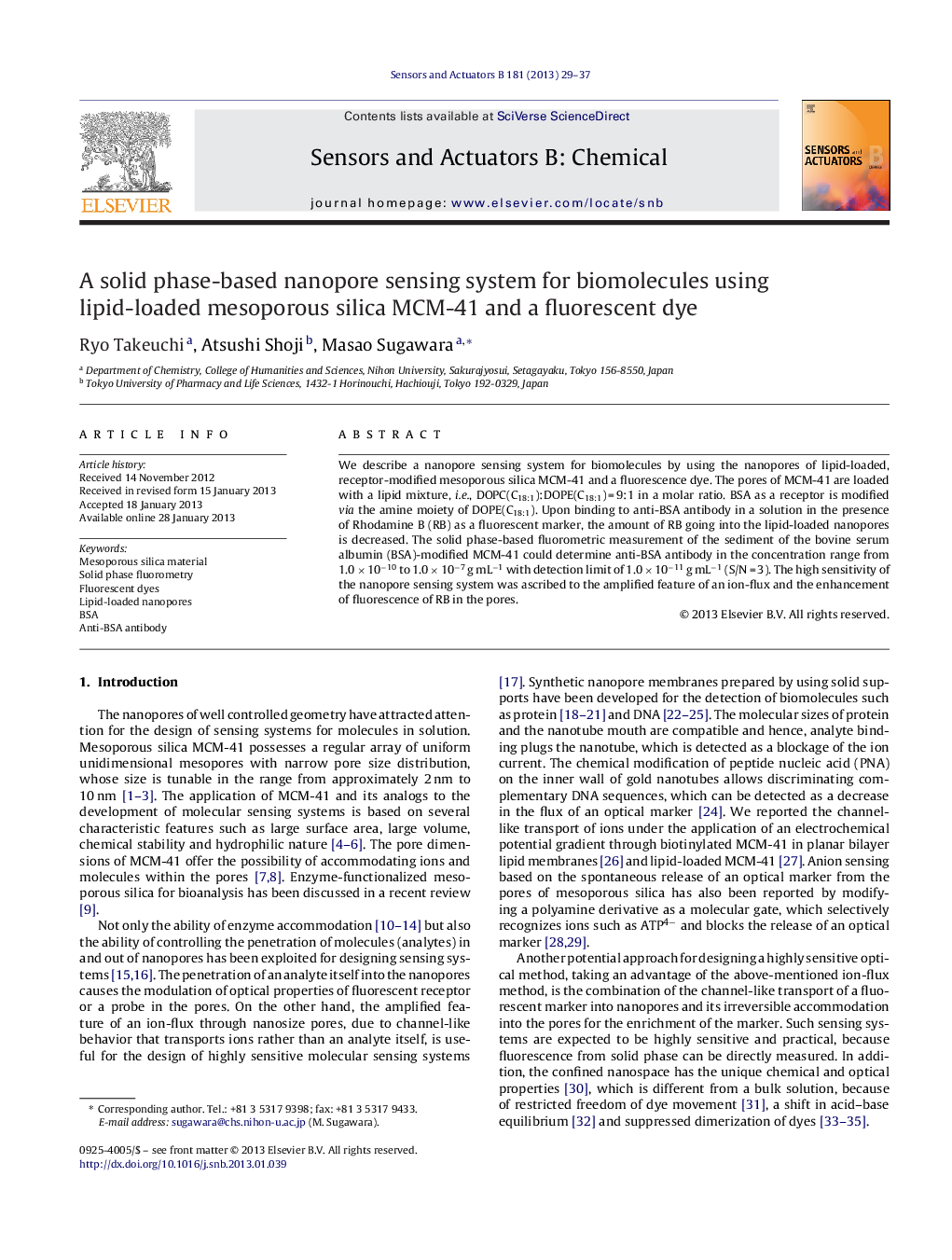| Article ID | Journal | Published Year | Pages | File Type |
|---|---|---|---|---|
| 742106 | Sensors and Actuators B: Chemical | 2013 | 9 Pages |
We describe a nanopore sensing system for biomolecules by using the nanopores of lipid-loaded, receptor-modified mesoporous silica MCM-41 and a fluorescence dye. The pores of MCM-41 are loaded with a lipid mixture, i.e., DOPC(C18:1):DOPE(C18:1) = 9:1 in a molar ratio. BSA as a receptor is modified via the amine moiety of DOPE(C18:1). Upon binding to anti-BSA antibody in a solution in the presence of Rhodamine B (RB) as a fluorescent marker, the amount of RB going into the lipid-loaded nanopores is decreased. The solid phase-based fluorometric measurement of the sediment of the bovine serum albumin (BSA)-modified MCM-41 could determine anti-BSA antibody in the concentration range from 1.0 × 10−10 to 1.0 × 10−7 g mL−1 with detection limit of 1.0 × 10−11 g mL−1 (S/N = 3). The high sensitivity of the nanopore sensing system was ascribed to the amplified feature of an ion-flux and the enhancement of fluorescence of RB in the pores.
